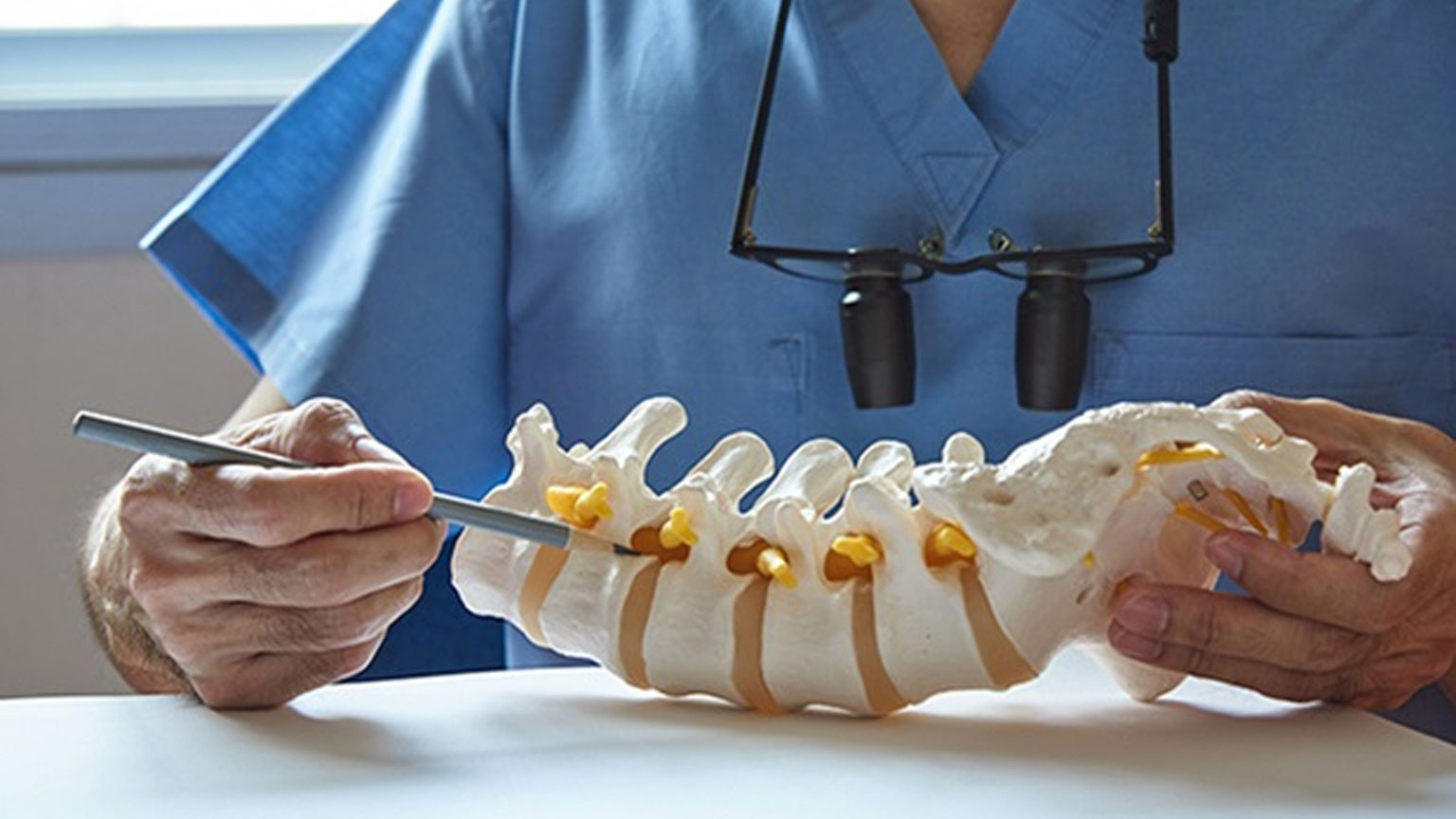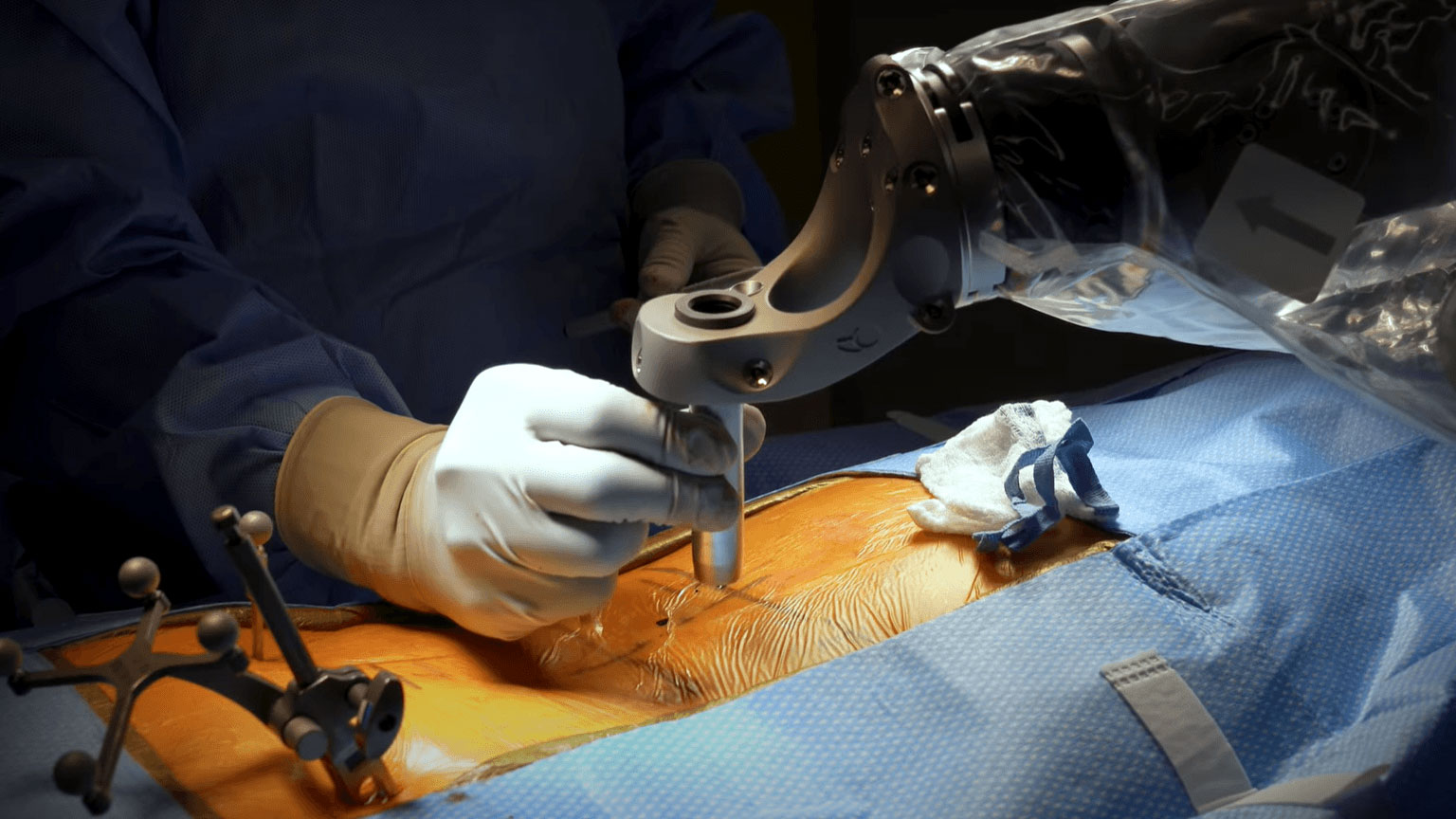Spine Surgery
Spine surgery encompasses a variety of procedures aimed at addressing issues related to the spinal column. These surgeries are performed to relieve pain, correct deformities, and improve function in patients suffering from conditions such as herniated discs, spinal stenosis, scoliosis, and spinal fractures. The goal is to restore mobility, alleviate pain, and enhance the overall quality of life.
| Particulars | Details |
|---|---|
| Number of days at hospital (Estimated) | 3 to 7 days |
| Number of days in India outside hospital (Estimated) | 10 to 14 weeks |
| Treatment’s Success Rate | 80% to 95% and above |
| Tests required to help assess the treatment | X-ray, regular blood tests, CT,EMG and MRI in certain cases |
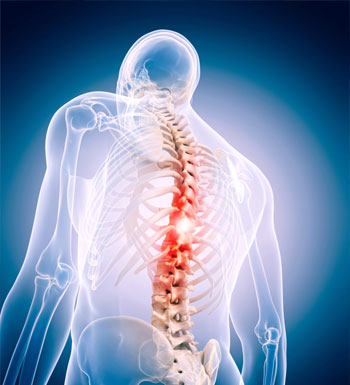
What are the major differences between traditional spine surgery and minimally invasive spine surgery?
Traditional open spine surgery involves the complete exposure of the anatomy. In minimally invasive spine surgery we surgically expose less of the anatomy which means, in many cases, an earlier recovery in the first few weeks after surgery. In minimally invasive spine surgery, we often use additional surgical aids, such as intraoperative spinal navigation. This provides the surgeon greater visibility into surgical areas with limited exposure.
Whether minimally invasive or traditional, the goals are the same for the long-term; we want to accomplish overall improvement in symptoms or a halt in degeneration. Ultimately, we want our procedures to result in less blood loss, shorter hospital stays, lower infection rates and faster recovery in the weeks following surgery. Minimally invasive surgery typically results in an easier recovery process for patients, however, not every patient or surgical condition is appropriate for minimally invasive surgery. It is important that you partner with your spine surgeon to identify the best treatment option for your condition.
Surgery is a controlled trauma. Therefore, we aim to maximize the benefit for the patient while minimizing the trauma of surgery as much as possible. We implement leading surgical techniques and technology as appropriate, and our patients benefit from our surgeons’ academic research to further both minimally invasive and complex spine surgery procedures.
Spine Surgery
The spine gives our body stability and strength every time we move around. Plus, the spinal vertebrae (bones) also serve as a protection for our spinal cord. Thus, any problems in our spine must be addressed by an experienced orthopedic surgeon.
Minimally invasive methods will be attempted first to address your pain or debilitating back issues, such as pain injections. If these do not solve the problem, then your orthopedist may perform minimally invasive spine surgery.
Types of Spine Surgery
There are several types of spinal surgery that can help those who are experiencing back pain, including the following:
- Discectomy
- Laminectomy
- Spinal Fusion
- Foraminotomy
- Microdiscectomy
Discectomy
A discectomy involves the removal of a portion of a herniated or bulging disc to relieve pressure on a spinal nerve.
Indications:
Indications:
- Herniated discs causing nerve compression.
- Severe leg pain (sciatica) that doesn't improve with conservative treatments.
- Hospital stay of 1-2 days.
- Full recovery within 4-6 weeks.
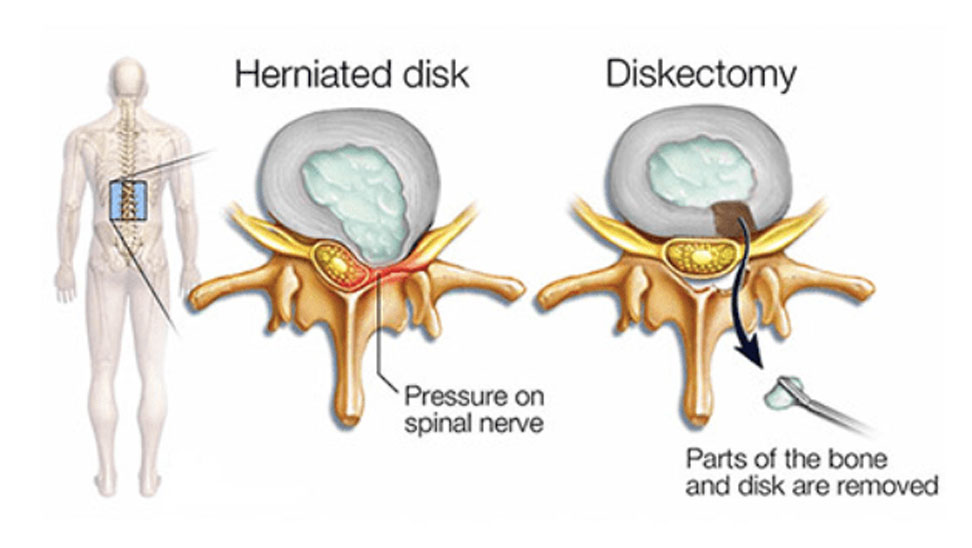
Laminectomy
A laminectomy involves removing part of the vertebra called the lamina to relieve pressure on the spinal cord or nerves.
Indications:
Indications:
- Spinal stenosis causing nerve compression.
- Persistent back pain, numbness, or weakness.
- Hospital stay of 2-4 days.
- Full recovery within 6-8 weeks.
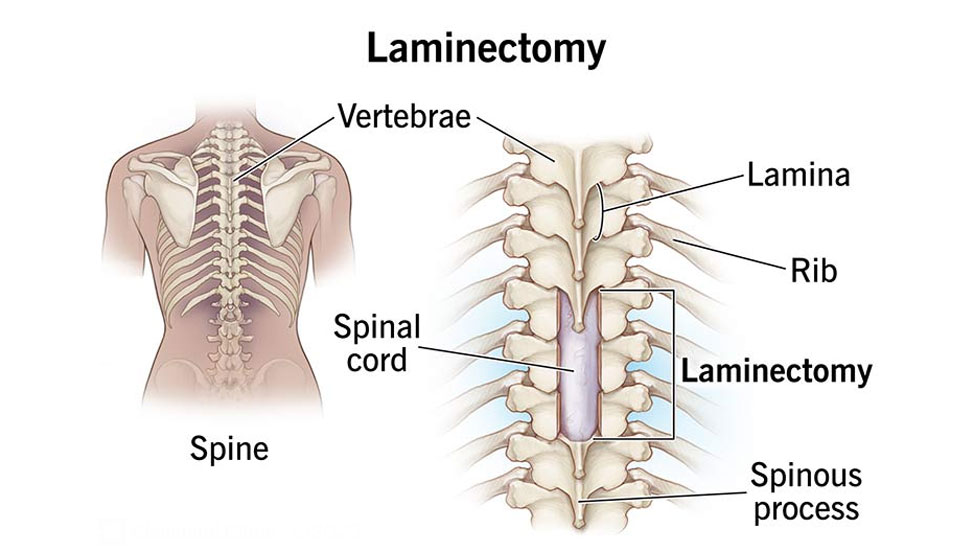
Spinal Fusion
Spinal fusion involves permanently connecting two or more vertebrae to eliminate motion between them, providing stability.
Indications:
Indications:
- Spinal instability or deformities.
- Severe degenerative disc disease.
- Spondylolisthesis.
- Hospital stay of 3-5 days.
- Full recovery can take 6-12 months, with restricted activities during healing.
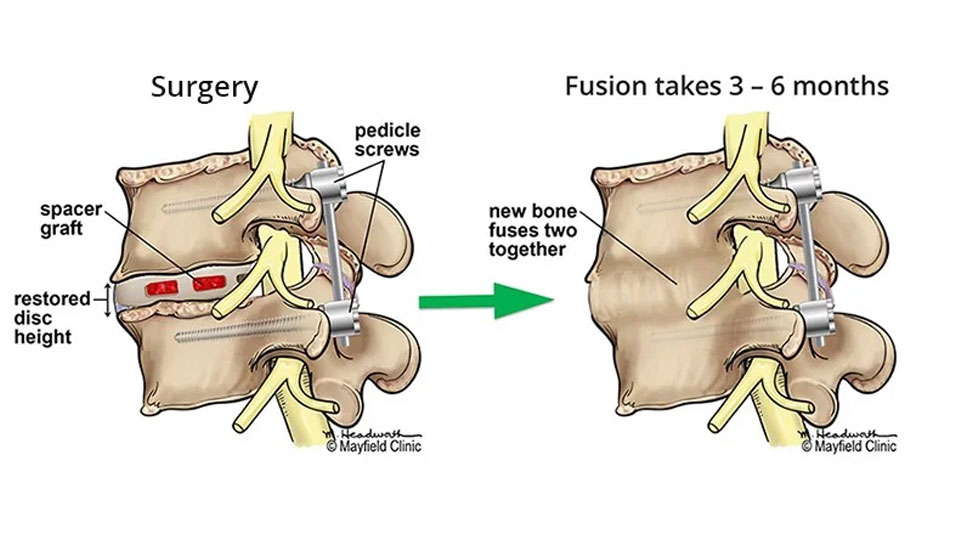
Foraminotomy
Foraminotomy involves enlarging the foramen (the opening where spinal nerves exit the spine) to relieve nerve compression.
Indications:
Indications:
- Foraminal stenosis causing nerve compression.
- Symptoms such as pain, numbness, or weakness in limbs
- Hospital stay of 1-2 days.
- Full recovery within 4-6 weeks
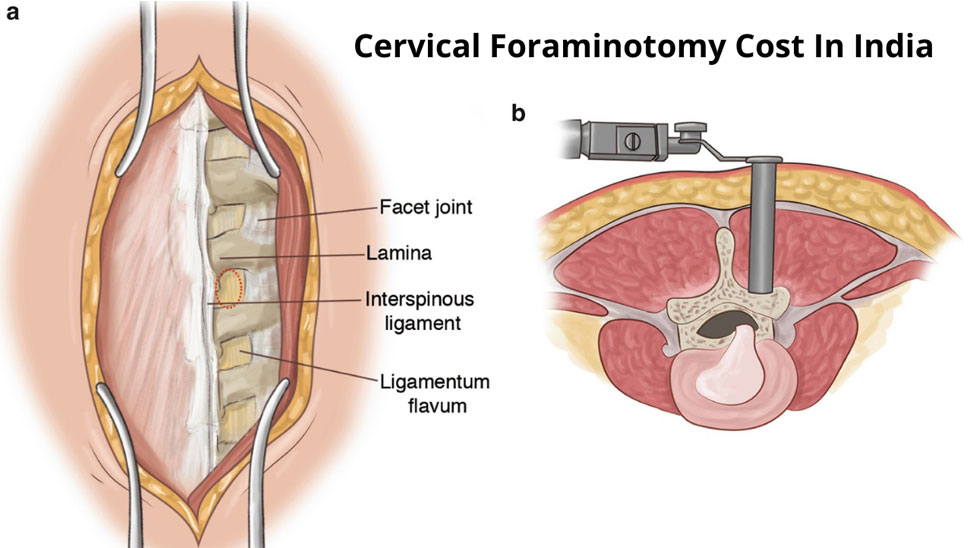
Microdiscectomy
A minimally invasive version of discectomy, microdiscectomy involves using a microscope to remove part of a herniated disc.
Indications:
Indications:
- Herniated discs causing nerve compression with persistent symptoms.
- Hospital stay of 1-2 days.
- Full recovery within 4-6 weeks
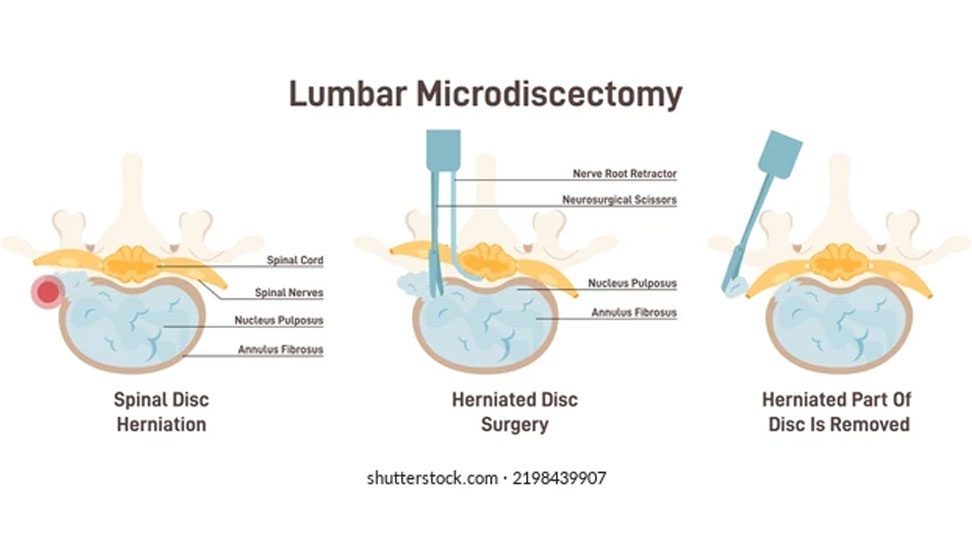
Who Require a Spine Surgery?
- Non-surgical treatments (such as physical therapy, medications, and injections) have failed to relieve symptoms.
- There is significant nerve compression causing pain, weakness, or numbness.
- There is spinal instability or deformity.
- The patient is experiencing severe, debilitating pain.
- There are structural problems such as herniated discs, spinal stenosis, or fractures.
Tests Required For Knee Replacement Surgery
- X-rays: To visualize the alignment and integrity of the spine.
- MRI (Magnetic Resonance Imaging): To get detailed images of soft tissues, including discs and nerves.
- CT (Computed Tomography) Scan: To provide detailed images of the spine's bone structure.
- EMG (Electromyography): To assess the electrical activity of muscles and nerves.
- Blood Tests: To ensure the patient’s overall health and readiness for surgery.
Frequently Asked Questions About Spine Surgery
Spine surgery, like any surgery, carries risks such as infection, bleeding, blood clots, nerve damage, and adverse reactions to anesthesia. However, advancements in surgical techniques have significantly minimized these risks.
Recovery time varies depending on the type of surgery and the patient’s overall health. Generally, patients can return to normal activities within a few weeks to a few months.
While spine surgery aims to alleviate pain, it may not completely eliminate it. The success of pain relief depends on various factors, including the type of surgery and the patient’s condition before surgery.
Post-operative care includes wound care, physical therapy, and gradual resumption of activities. Follow-up visits with the surgeon are crucial to monitor healing and progress.
Non-surgical treatments such as physical therapy, medications, chiropractic care, and spinal injections are often tried before considering surgery.
Choose a surgeon with specialized training in spine surgery, a good track record of successful surgeries, and positive patient reviews. Consultations and second opinions can also help in making an informed decision.By understanding these aspects of spine surgery, patients can make informed decisions and approach their treatment with confidence.


